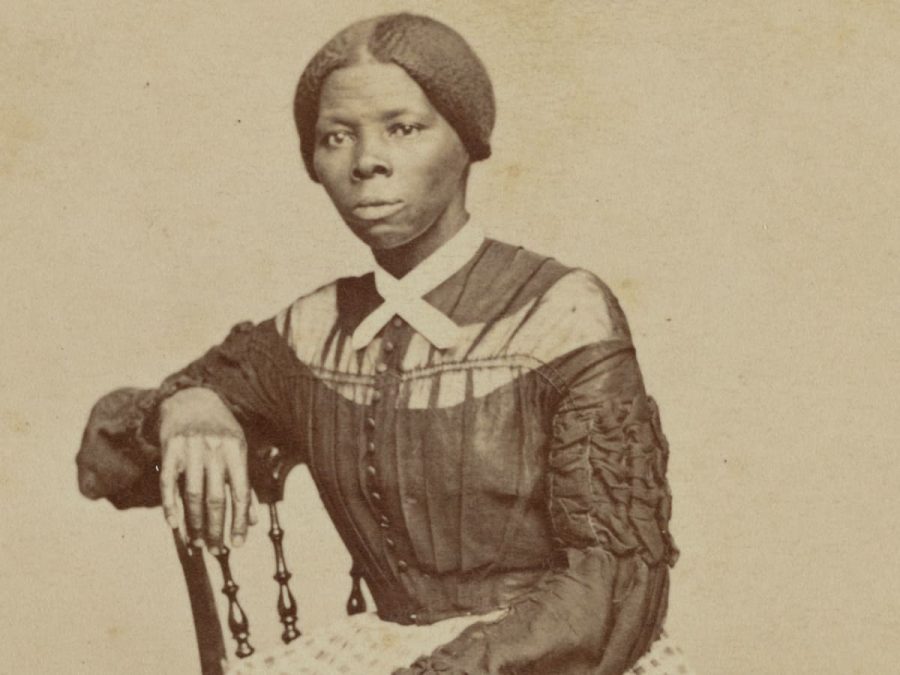Harriet Tubman
In honor of Black History Month, every school day The Cardinal will feature a prominent and historical Black American, living or dead, who has worked toward change, advancement, and/or world peace. Some of them are heroes, and some are unsung heroes, who deserve recognition, and have made a contribution to society.
February 24, 2022
Harriet Tubman was born as Arminta Ross (nicknamed “Minty”), the enslaved daughter of Harriet Green (nicknamed “Rit”) and Benjamin Ross, sometime around 1820 in Dorchester County, Maryland. She grew up enslaved and on a plantation, but would later become an important African American abolitionist.
When Tubman was young, she received a blow to the head. An owner threw a heavy weight, intended for a different enslaved person, but it hit Tubman’s head instead. The injury would go on to have life-long complications for her – causing dizziness, painful headaches, seizures, and hallucinations. She believed that the visions she saw were revelations from God and grew to become an extremely devout Christian. Her faith became an important part of what would later empower her.
Around 1844, Tubman married a free Black man named John Tubman, and adopted his last name. Soon after, she also took on the first name of “Harriet,” in honor of her mother.
Around 1849, news of an impending sale of two of her brothers, prompted Tubman and her brothers to run away from the plantation. Though the three successfully escaped, the brothers ultimately decided to head back. Tubman alone continued forward, following the Underground Railroad, a loose network of people and houses who were sympathizers of the abolitionist movement. She eventually ended up in Pennsylvania, where she made a living as a housekeeper.
Passed in 1850, the Fugitive Slave Act, compelled all states in the United States to help in the capturing of slaves and discouraged aiding runaway slaves. Furthermore, under the law, even freed black people could be enslaved. The act introduced new dangers and forced many runaway slaves to move further north to Southern Ontario, which had abolished slavery, as it was a part of the British Empire. Despite these risks, Tubman made the journey back to help her family.
In December of that same year, Tubman returned to Maryland to save her niece and her niece’s children from an approaching sale. She would make the trip back 13 times, rescuing her brothers, and their wives and children, among others. On one of her missions, she tried to bring her husband with her, but he had remarried and insisted that he was happy staying where he was. In one of her final expeditions, she recovered her elderly parents.
Throughout her lifetime, Tubman personally rescued at least 70 people, possibly guiding upwards of 300 people by instructing them on how to escape. She preferred to conduct missions in the winter months, when nights were long and less people were likely to be about. She also carried a revolver with her, both to protect her and her group from slave catchers and to discourage people from havinng second thoughts and returning back (as it could endanger the safety of the entire group). For her efforts, she was given the name “Moses,” after the biblical figure who guided the Hebrews out of Egypt and to freedom.
During the Civil War, Tubman helped the Union army (– which wanted to abolish slavery) by working as a nurse and cook, before becoming a spy. Afterwards, she spoke for the Women’s Suffrage movement, travelling to major cities in the east.
Though Harriet Tubman fell victim to illness and died in 1913, she is still remembered today as a symbol of bravery, perseverance, and freedom.


